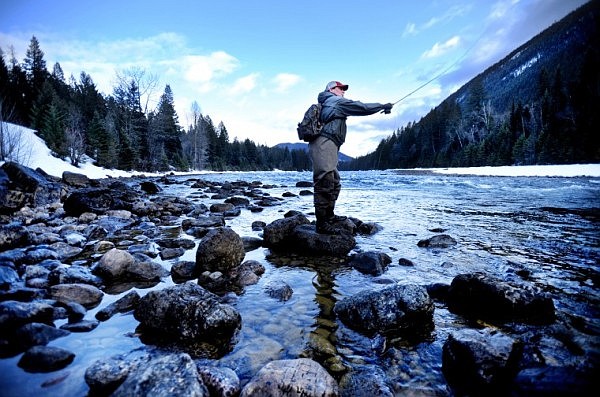Rotenone fish removal projects are safe, effective and necessary
The Montana Chapter of the American Fisheries Society, representing approximately 200 state, federal and private fisheries professionals, would like to respond to Mike Garrity’s recent column (Remove non-native fish without poisoning our streams, Aug. 8) regarding native fish conservation efforts that involve the use of EPA approved fish toxicants.
Mr. Garrity made several false and inflammatory statements about fish toxicants in general and specific comments about a proposed project on the North Fork Blackfoot River. He stated that rotenone is “poured” into streams, that it kills anything with gills and that it would possibly contaminate nearby wells.
In Montana, rotenone projects are meticulously planned by well-trained experts licensed by the state to disperse the chemical at the minimum concentrations and durations necessary to remove the target fish species. These projects are usually conducted in late-summer after juvenile amphibians have matured and use lungs to breath rather than gills, thus are not susceptible to the chemical.
Similarly, mammals, birds, reptiles and all other non-gilled animals are not affected by rotenone. Some gill-breathing aquatic insects are more susceptible to rotenone than others, but multiple studies have demonstrated that they recover within a few months after a treatment due to their remarkable dispersal capabilities.
Mr. Garrity also criticized the use of potassium permanganate to neutralize rotenone. Again, his claims are inflammatory and misleading.
Potassium permanganate is available for unregulated over-the-counter and online purchase and is widely used as a disinfectant at municipal water treatment facilities, food preservative and a control agent of nuisance and invasive organisms like zebra mussels. Potassium permanganate is on the World Health Organizations Model List of Essential Medicines, representing the safest and most effective medicines needed in a health system. There has never been an instance in Montana that potassium permanganate did not successfully neutralize rotenone when employed to do so.
Numerous studies near rotenone fish removal projects have demonstrated that neither rotenone nor potassium permanganate contaminate ground water wells because these chemicals quickly bind with fine sediments and organic matter within the top inch or two of the stream or lake bed.
Mr. Garrity suggests that fish removal projects can be successfully completed using mechanical methods such as electrofishing, angling or netting. He is right, they can, in small waterbodies, such as streams less than about 2 miles in length and with very simple habitat. Several projects using mechanical methods have been successfully completed in Montana.
However, these techniques are simply not a viable option for the proposed Blackfoot project due to the expansive size of the stream network.
Game Creek, the Wyoming project he cites where trojan male brook trout will be stocked, is described in the May 11, 2020 Jackson Hole News and Guide as “a small seep”, “only a couple feet wide”, and 5 miles long. It is telling that Wyoming biologists attempted electrofishing but found it ineffective as the sole fish removal method in this stream that is many times smaller than the North Fork Black Foot River. The trojan male concept has been developed only for brook trout, and to date successfully used only in a controlled environment, such as a hatchery.
Additionally, it would be pointless in the Blackfoot project because no brook trout exist in the project area despite Garrity’s claims. The proposed Blackfoot project would remove non-native rainbow trout that have hybridized with cutthroat trout.
The Montana Chapter of the American Fisheries Society encourages thoughtful efforts that conserve and restore Montana’s native fish species which are an important part of our sporting heritage. As is abundantly clear this year, climate change is having unprecedented effects on Montana’s aquatic systems. Biologists have long been working to find large, intact, connected aquatic systems that will provide native fish refuge against climate change.
Unfortunately, those places are limited and may coincide with locations currently occupied by non-native fish which are often more widely distributed because they can tolerate a wider range of environmental conditions than native fish species.
Carefully planned and implemented rotenone fish removal projects are a safe, effective and necessary management tool that should be part of the larger strategy to ensure our native species are around for future generations to enjoy.
Pat Clancey, Jim Dunnigan, Chris Downs, Lisa Eby, Steve Dalbey and David Stagliano represent the American Fisheries Society. The group's overall mission is to improve the conservation and sustainability of fishery resources and aquatic ecosystems by advancing fisheries and aquatic science and promoting the development of fisheries professionals.


